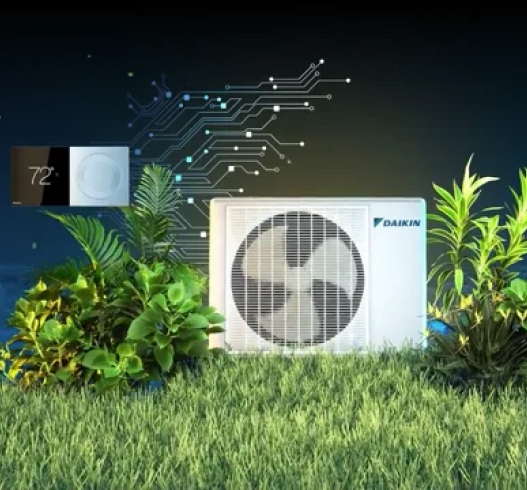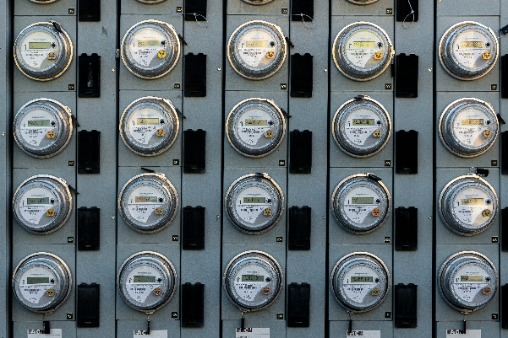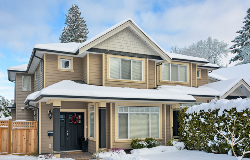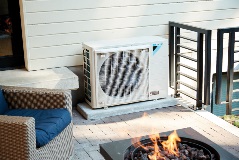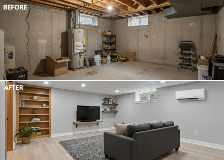Heat and Cool an ADU: Smart Climate Control for Small Spaces
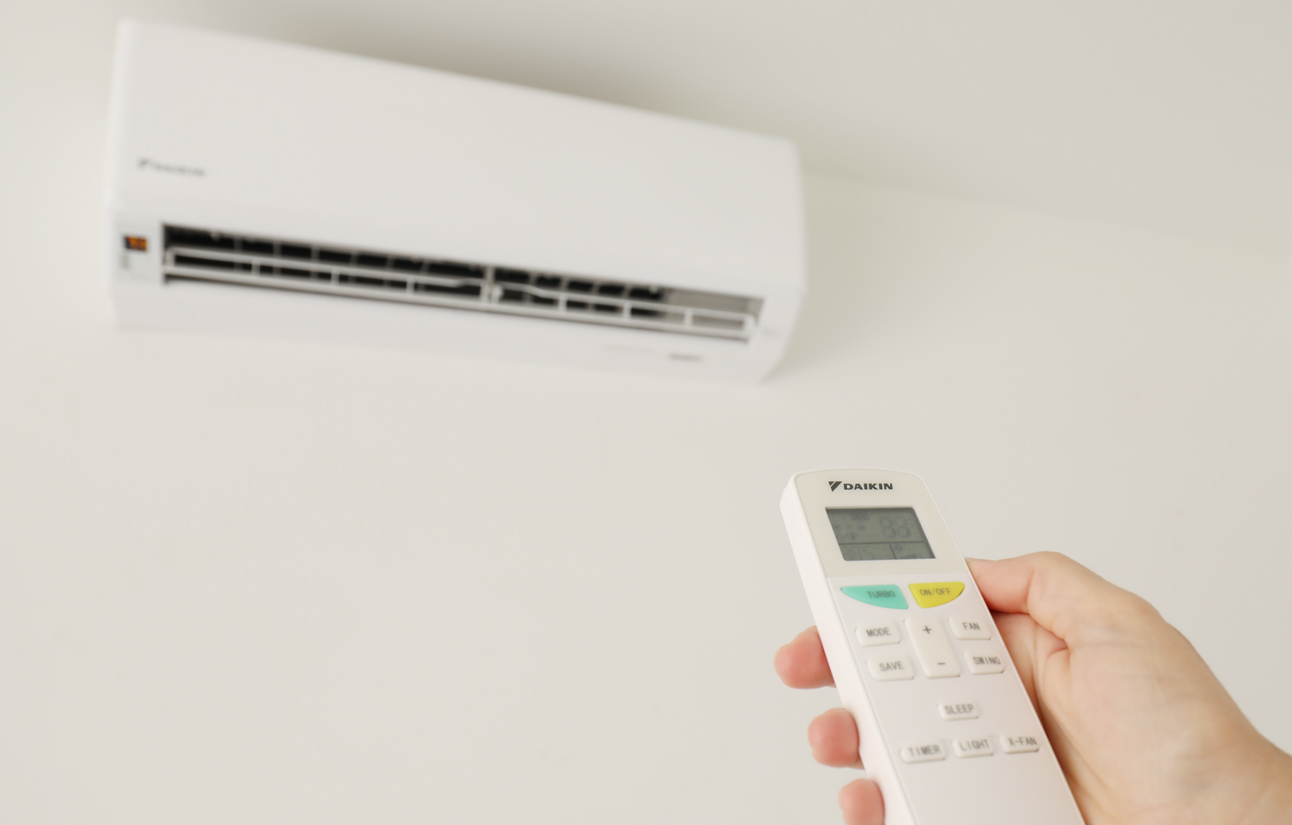
An ADU isn’t just a trendy move—it can be a wise, flexible investment in your property. But keeping a compact space comfortable year-round often requires a unique heating and cooling solution. When it comes to heating and cooling small spaces, such as an ADU, mini-split systems stand out as an innovative and flexible alternative to traditional ducted systems.
Why Mini-Splits Work for ADUs?
• Ductless mini-split systems consist of two main components:
o An outdoor condenser (cooling only option) or heat pump unit (heating and cooling)
o One or more indoor units, usually mounted high on a wall or in the ceiling
These flexible systems require only a small hole for refrigerant lines and wiring between the indoor and outdoor units. That means no ducts, minimal structural impact, and maximum use of your interior space.
Here's a closer look at the indoor comfort challenges ADUs face—and how mini-split systems can meet them with ease.
1. Limited Space: No Room for Bulky Equipment
While standard ducted HVAC systems are designed to provide indoor comfort, ductless mini-split solutions are often an excellent choice for ADUs, offering exceptional efficiency and customized comfort.
Minisplit systems, also known as ductless HVAC, are designed for homes or units:
• Without space for traditional ductwork
• Without room for bulky air handlers or furnaces
• Without areas for multiple return vents and registers
Fortunately, ductless mini-split systems are designed to provide a practical and high-performance solution for small living spaces
2. Zoned Climate Control: Personalized Comfort in Every Corner
Zoned climate control is a major advantage, especially in ADUs, where every square foot counts and rooms often serve multiple purposes. In cases where the ADU is attached to a home, the ADU’s climate control can be zoned separately from the house, allowing for independent climate control.
What Is Zoned Heating and Cooling?
Zoned systems allow you to manage the temperature in separate “zones” independently, rather than treating the entire unit as a single space. This offers flexibility as your needs change—perfect for ADUs that serve as guest suites, rental units, or home offices.
Each ductless unit typically has its own handheld remote controller or can use a wall-mounted thermostat, allowing you to tailor the temperature of each room to suit its usage. This not only boosts comfort but also allows you to turn off the system when not in use, without wasting energy on empty rooms. When the space is occupied and units are turned on, the inverter driven compressor can help the system reach setpoint quickly and efficiently compared to a traditional single-stage central AC system.
Ductless mini-split systems can be specifically designed for a single zone or multiple zones, and the unique layout of ADUs:
• Single-zone mini-split systems are ideal for open-plan ADUs, offering efficient comfort throughout the entire space. This zoning feature is ideal for:
o One room dedicated workspace, living area, or studio
o A single ‘multi-purpose’ room that functions as both an office and a bedroom
• Multi-zone mini-split systems are designed to connect multiple indoor units to a single outdoor condenser, allowing you to set separate temperatures for each area—such as the bedroom, kitchen, bathroom, or workspace. This zoning feature is ideal for:
• Targeted comfort in spaces like sun-filled bedrooms or busy kitchens
• Energy savings by avoiding overheating or overcooling unused areas
• Flexibility as your needs change—perfect for ADUs that serve as guest suites, rental units, or home offices
A 500-square-foot ADU with a living room/kitchen combo, a bathroom, and a bedroom can benefit from a multi-zone mini-split system by utilizing separate indoor units for each space. enabling the living room to be kept cool during the day while the kitchen and bedroom settings are adjusted for energy savings or comfort as needed.
3. Quiet Operation: Essential for Peace in a Small Space
In a small space like an ADU, you’re never far from appliances. Unlike traditional homes where noisy HVAC equipment might be tucked away in an attic, basement, or utility closet, ADUs require climate systems that operate directly in your living, sleeping, and/or working spaces. This means that noise control isn't just a luxury; it's a necessity for comfort.
How Ductless Mini-Splits Stay Quiet
• Measured sound levels: Ductless indoor units are designed to operate at low sound levels. The indoor unit of the Daikin AURORA can reach sound levels as low as 19 decibels in quiet mode—quieter than a study room.1
• Inverter compressors: Modern ductless mini-split systems utilize adaptive inverter technology to maintain a steady, low-power operation, instead of cycling on and off at full blast, which drastically reduces startup noise.
• Isolated outdoor units: Condensers can be wall-mounted or pad-mounted, reducing vibration and ambient noise transfer.
• No ductwork: Ductless units do not have the air turbulence associated with air moving through ductwork.
• Minimal vibration: Advanced mounting techniques and sound dampening in both the indoor and outdoor units help reduce vibration noise.
If you're considering building, renovating, or upgrading a space for an ADU, ductless mini-split systems offer an efficient, flexible, and quiet heating and cooling solution that is especially well-suited for ADUs. Their compact design eliminates the need for bulky ductwork, while inverter technology ensures energy-efficient operation with minimal noise.
With single-zone or multi-zone capabilities, ductless systems enable tailored comfort for your ADU, reducing energy waste by conditioning only occupied spaces. For homeowners seeking effective climate control that maximizes space and minimizes disruption, ductless mini splits represent a modern, smart choice for accessory dwelling units.
In this article
Connect on Social Media
 Follow on Facebook
Follow on Facebook
 Follow on YouTube
Follow on YouTube
 Follow on Instagram
Follow on Instagram
 Follow on X
Follow on X
 Follow on TikTok
Follow on TikTok
 Follow on Pinterest
Follow on Pinterest

Looking for help now?
Enter your zip code to search for Daikin Contractors in your area.
Learn More
Learning Center Content
Stay informed about home comfort technology, when to upgrade, energy efficiency, and reducing your energy bills.




